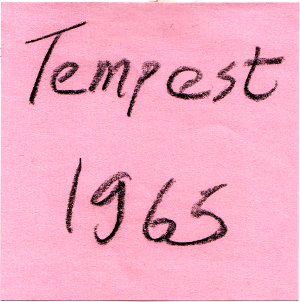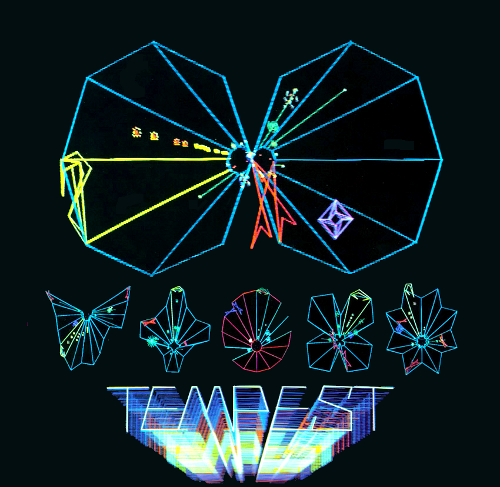Maker Faire 2011 Roundup: Tempest
Written by ben // June 8, 2011 // Events, Exhibits, Game Lore // No comments
 Tempest was, apparently, a game with a short period of fame. We received 11 votes for it, but ten of those were from the 1960-1969 bracket. It won that bracket handily, getting twice as many votes as Centipede, and its performance in this single age bracket was enough to bring it in contention with industry heavyweights Half-Life, Myst, and even Halo.
Tempest was, apparently, a game with a short period of fame. We received 11 votes for it, but ten of those were from the 1960-1969 bracket. It won that bracket handily, getting twice as many votes as Centipede, and its performance in this single age bracket was enough to bring it in contention with industry heavyweights Half-Life, Myst, and even Halo.
Tempest was released for arcades in 1981, sporting color vector graphics. At the time, color vector graphics were considered a highly advanced display system, though it would soon prove to be a technological dead end. The player controls a spaceship on the top of an abstract 3d playfield, firing “down” at enemies approaching from the bottom. The player’s first goal is to prevent enemies from reaching the top, as many enemies will become more difficult or even near-impossible if they do. Once all the enemies are defeated, the player’s ship moves down the field at high speed, possibly destroying itself on stationary spikes left by those enemies. The next level begins once the player’s ship leaves the field.
Tempest included sixteen unique levels with different layouts, a rarity at a time when level progression meant replaying the same level with faster or more difficult enemies. Only after completing those sixteen levels would the game restart with a new color scheme, more enemy types, and harder gameplay. Tempest was one of the first games to permit the player to choose a starting level, allowing experienced players to skip the easy beginning levels – although this option was only available if the last played game had reached the intended level.
Like many classic arcade games, Tempest has been ported to an incredible number of consoles and computer systems. Also like many classic arcade games, the basic mechanics have been largely unexplored by modern games. In contrast to Tetris’s hundreds of variants, very few variants of Tempest exist, and most of the releases have been simple ports and graphical updates. One notable exception is Space Giraffe – a game whose graphics style and fundamental gameplay mechanics are strongly reminiscent of Tempest’s- but Space Giraffe’s gameplay diverges sharply after the fundamentals, and it’s less of a variant and more of a stylistic homage.
We still can’t explain the meteoric rise and fall of Tempest within that single age bracket. Can you? Give us your theories!


